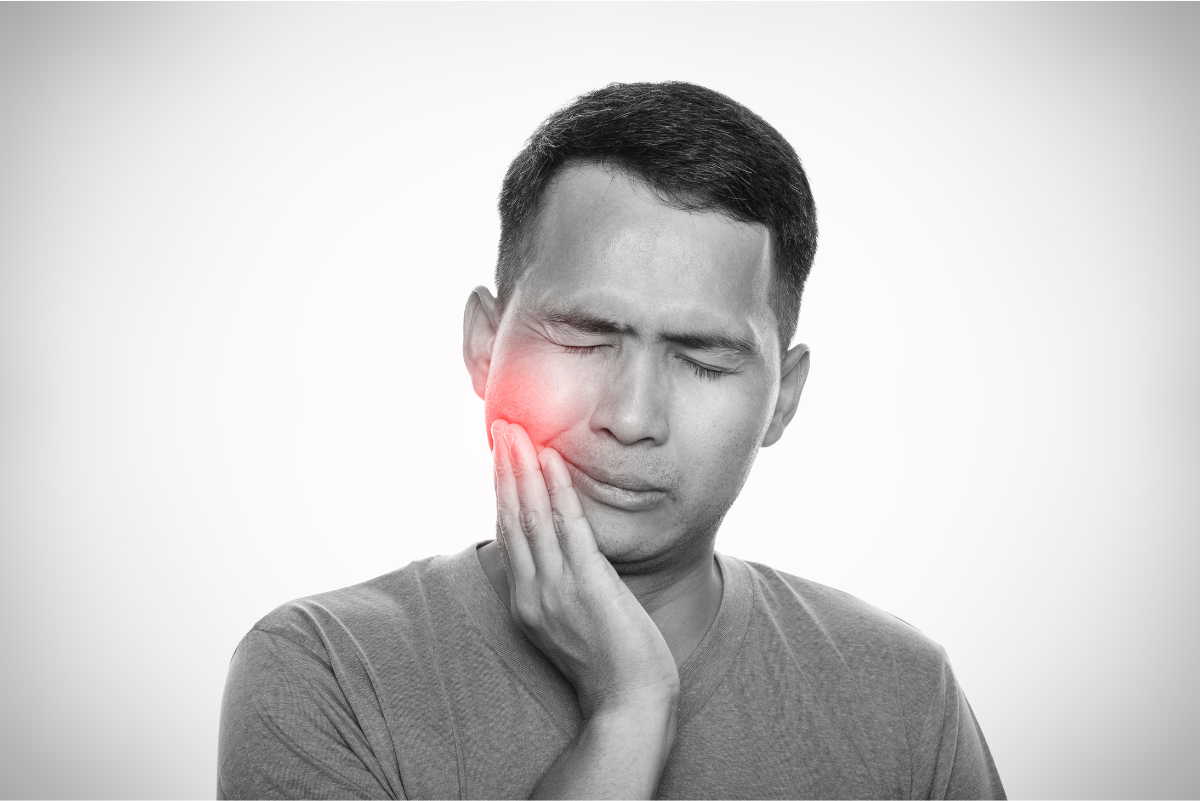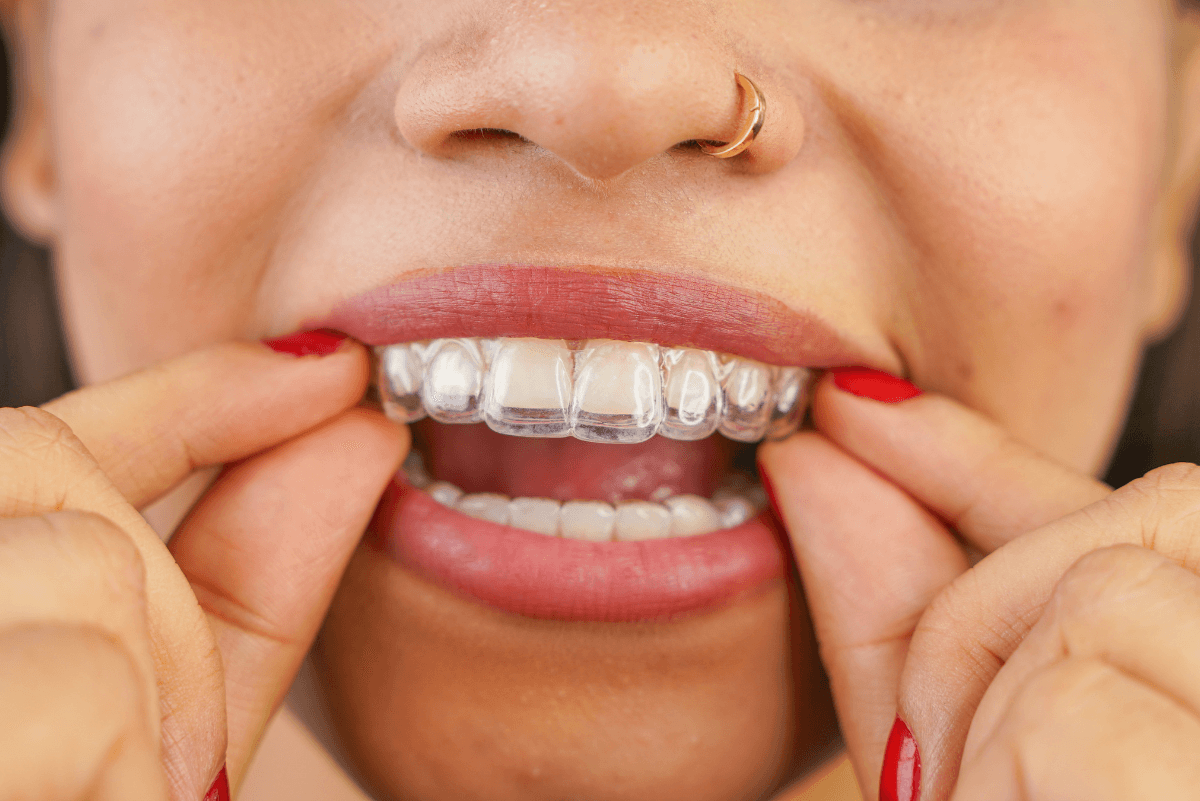Dental decisions are never easy, especially if you have several options available. When it comes to orthodontic treatment, everyone wants instant results. But do you know what’s more important than speed? Accuracy and longevity. You don’t want to go through all this fuss to end up with less than ideal results. When it comes to braces vs Invisalign, you have to consider more than just the possible treatment time. Read on to learn more about braces and Invisalign’s pros, cons, and treatment process.

Braces vs. Invisalign: Which is Better?
Both Invisalign and braces aim to improve your smile and oral health by straightening your teeth. Braces are made up of clear (or metal) brackets bonded to your teeth which are held together with a wire. Since the inception of braces, there have been a lot of upgrades. They are much smaller, and brackets can now be bonded to the inside of your teeth (lingual braces), so that only you know they’re there!
Invisalign (clear aligners) are meant to be even more discreet. The aligner trays are made of smooth, soft, BPA-free transparent plastic over your teeth. Your orthodontist will generate an accurate 3-D image of your teeth using X-rays, photographs, and impressions and then construct your aligner trays appropriately.
Invisalign may appeal to you if you’re an adult or have a self-conscious teen concerned about their teeth. It may also seem like the better option since it is removable, allowing you to eat, drink, brush, and floss more easily. However, if the thought of having to remove your trays for meals or when drinking anything other than water seems inconvenient, Invisalign may not be the ideal option for you. Patients with Invisalign need to remember to brush their trays before putting them back in after each meal to avoid discoloration. And if trays are not worn regularly, they won’t be effective.
So now that you know how they work, what exactly are the differences that will make or break your decision? Let’s evaluate the pros and cons.
Advantages of Braces
Works for Complex Dental Plans
Braces are more powerful than clear aligners since they adhere directly to each tooth, resulting in a stunning smile in even the most challenging situations.
You Can Drink Coffee with Ease
Because braces do not stain and are heat resistant, patients may drink tea, coffee, or other liquids throughout the day without having to remove aligners or risk staining attachments.
Less Responsibility
You can’t remove your braces without the help of your orthodontist. You don’t have to stress about leaving it somewhere, forgetting to brush them, or leaving them out for more than the recommended time per day. This is one reason why treatment with braces can be faster than Invisalign, because they don’t rely as much on patient compliance and tooth movements can be more efficient.
Disadvantages of Braces
Appearance of Braces
Braces are more easily noticeable, especially the classic metal braces. While lingual and ceramic braces are less visible, they can also be less comfortable and require some time to get used to.
Braces Can Leave Stains
Because metal brackets are often left in place for one to two years, patients may see colour variations in their teeth after they are removed if their oral hygiene isn’t on point. Fortunately, most people can prevent tooth discolouration by ensuring they brush and floss properly while they have braces. Patients can also whiten their teeth following their treatment. We have found using whitening toothpastes while in orthodontic treatment is helpful in preventing staining of teeth, brackets/elastics, and attachments.
Food Restrictions.
Gum, bagels, hard candies, and popcorn are just a few examples of what should not be eaten by people who have braces. This is because this type of food might become trapped in the brackets and/or cause brackets to break off which will prolong your treatment time. Your orthodontist will give you a list of foods to avoid or handle with care.
Advantages of Invisalign
Appearance of Invisalign
Transparent aligners are a popular alternative to traditional braces because of their subtle look. From a distance or even in photographs, they can be less noticeable. Adult orthodontic patients like that their treatment is not apparent to their coworkers or peers, as do self-aware teenagers.
No Eating Restrictions
You have to remove your aligners before eating or drinking anything other than water. This means you won’t have the same food restrictions as those who wear braces that have to avoid hard or chewy foods such as nuts, popcorn, or even bagels.
Oral Hygiene Ease
Since you can remove your trays, It is also a lot easier to brush and floss. Braces come with a more lengthy oral hygiene routine as they are more difficult to floss around! However, a Waterpik is an amazing tool to help those with traditional braces.
Disadvantages of Invisalign
Doesn’t Work for Everyone
Transparent aligners don’t work for every patient, especially those with a complex dental treatment plan. They’re better suited for those looking for minor straightening.
You Need To Be Disciplined
Have a teenager that always forgets to brush their teeth? Invisalign may not be for them, despite how much they hate the look of braces. Tooth decay and cavities can result from using Invisalign aligners on patients with poor dental hygiene. After eating or drinking, wearers must brush and floss their teeth properly. That means the more you snack, the more you’ll be brushing your teeth throughout the day. In addition, trays must be worn 22+ hours a day to ensure their effectiveness. If you forget to put them back in, they won’t work!
Must Remove For Every Meal or Snack
Patients who use Invisalign trays can only drink water while wearing them; otherwise, they must take them out before eating or drinking anything else. The plastic can be damaged easily by food. Aligners should be removed before eating hot or coloured beverages since the clear plastic stains quickly and warps when heated.
Invisalign vs Braces: Which Takes Longer
This is a difficult question to answer because the treatment period with clear aligners and braces is mainly determined by the degree of correction needed. Braces take an average of 12 to 24 months to correct, with some extreme instances taking much longer, whereas Invisalign can take anywhere from 6 to 24 months.
It’s important to note that transparent aligners aren’t always appropriate for the most serious orthodontic conditions. Braces usually come out on top in terms of treatment speed in more complicated or challenging orthodontic patients. On the other hand, clear aligners are improving at dealing with challenging orthodontic difficulties, so it truly depends on the situation.
For the length of treatment, braces are worn 24 hours a day, whereas Invisalign trays are worn for around 22 hours a day. The reality is that kids who choose Invisalign must be fully committed to the therapy. If your child isn’t the most conscientious and forgets to wear their aligners for the appropriate amount of time, the treatment duration will be extended.
You don’t have to make these decisions alone. At Eau Claire Park Dental, we walk you through your options and refer to some of the best orthodontists in the city, so you can feel confident about straightening your smile! Our friendly staff is here to help you get the quality treatment you deserve. Contact us to learn whether braces or Invisalign is right for you.



